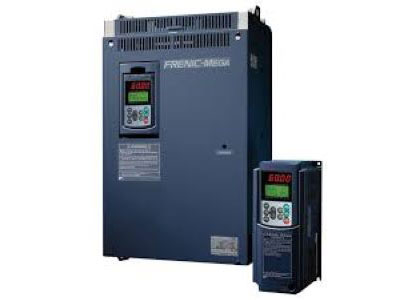Key Takeaway
A Variable Frequency Drive (VFD) is an electrical device essential for controlling the speed of electric motors by adjusting their input voltage and frequency. It finds widespread application across industrial settings to regulate the operation of pumps, fans, conveyor belts, and various machinery. VFDs enable precise control over motor speed, which is crucial for optimizing energy consumption, enhancing operational efficiency, and extending the lifespan of equipment. By adjusting motor speeds based on demand, VFDs help industries achieve significant energy savings and reduce wear and tear on machinery components. Overall, their versatility and ability to improve process control make VFDs indispensable in modern industrial automation, ensuring smoother operations and cost-effectiveness.
Energy Efficiency and Cost Savings
One of the primary reasons for using VFDs is their ability to significantly enhance energy efficiency. By adjusting the motor speed to the precise requirements of the application, VFDs reduce energy consumption. This not only lowers electricity bills but also contributes to environmental sustainability. For instance, in a scenario where a motor operates at half its speed, the energy consumption can be reduced by almost 50%. This direct correlation between speed and energy use makes VFDs an attractive option for industries aiming to cut operational costs. Additionally, the initial investment in VFD technology often pays for itself through the energy savings achieved over time. Industries that implement VFDs in their systems frequently observe a noticeable reduction in their overall energy expenditure.

Enhanced Motor Control
VFDs provide unparalleled control over motor operations, allowing precise adjustments to speed, torque, and direction. This level of control is essential for processes that require varying speeds at different stages of operation. For instance, conveyor belts in manufacturing can be smoothly ramped up to operating speed, reducing mechanical stress and wear. Additionally, VFDs enable soft starting and stopping of motors, which minimizes electrical and mechanical stress on equipment, resulting in fewer maintenance requirements and extending the life of the motors.
Enhanced motor control also means better synchronization of multiple motors, crucial in complex industrial processes. By ensuring motors run at optimal speeds, VFDs contribute to maintaining product quality and consistency in manufacturing applications. Imagine a scenario where precise speed adjustments are necessary to maintain product uniformity; VFDs excel here, offering reliability and efficiency.
You May Like to Read
Increased Equipment Lifespan
Using VFDs (Variable Frequency Drives) significantly enhances the lifespan of industrial equipment. When motors start and stop, traditional starters expose them to sudden power jolts. This abrupt power surge causes considerable stress and potential damage. VFDs, however, enable gradual acceleration and deceleration, which is much gentler on the motor and associated machinery.
Imagine the wear and tear during frequent start-stop cycles. With VFDs, this is minimized, preserving equipment integrity. The key is in how VFDs optimize motor performance. By avoiding overloads, they prevent motor overheating and burnout, crucial for maintaining equipment health.
Furthermore, this protective mechanism extends beyond just the motors. The entire system benefits from the reduced mechanical and electrical stress, ensuring reliable and consistent performance. For engineers, this means fewer breakdowns and lower maintenance costs.
Improved Process Flexibility
Flexibility in industrial processes is a significant advantage of using Variable Frequency Drives (VFDs). They allow seamless adjustments to motor speeds, enabling quick adaptations to changing process requirements. This adaptability is crucial in industries where production lines must frequently switch between different products or processes.
For instance, in the food and beverage industry, VFDs can adjust the speed of mixers, conveyors, and packaging machines to accommodate different product types and sizes. This flexibility leads to more efficient production processes and reduces downtime associated with equipment changeovers.
Additionally, VFDs support programmable operations, allowing for automation and fine-tuning of processes to achieve optimal performance. This capability results in higher productivity and better utilization of resources, making VFDs invaluable in dynamic industrial environments.
Moreover, VFDs enhance energy efficiency by running motors at the optimal speed for each task, reducing energy consumption. This not only cuts costs but also supports sustainability goals.
Environmental and Regulatory Benefits
Variable Frequency Drives (VFDs) offer significant environmental and regulatory advantages, aligning perfectly with modern industrial goals. These devices optimize energy consumption by adjusting motor speeds according to demand, thereby minimizing waste and enhancing overall efficiency. Such practices not only comply with stringent environmental standards but also support industries in their commitment to sustainability. By reducing energy usage, VFDs contribute directly to lowering greenhouse gas emissions, crucial in the global fight against climate change.
Industries face increasing pressure to demonstrate their environmental responsibility, and VFDs play a pivotal role in meeting these expectations. They help companies adhere to specific regulatory requirements regarding motor efficiency and energy conservation, ensuring compliance and avoiding potential fines. Moreover, implementing VFDs improves a company’s reputation as a conscientious and forward-thinking operator in the marketplace.
Conclusion
In conclusion, the comprehensive utility of Variable Frequency Drives (VFDs) in industrial applications cannot be overstated. They offer significant energy savings, enhanced motor control, increased equipment lifespan, improved process flexibility, and notable environmental benefits. By investing in VFD technology, industries can achieve higher efficiency, lower operational costs, and a more sustainable footprint. Understanding and leveraging the capabilities of VFDs will enable you to contribute effectively to the optimization and advancement of industrial operations.
